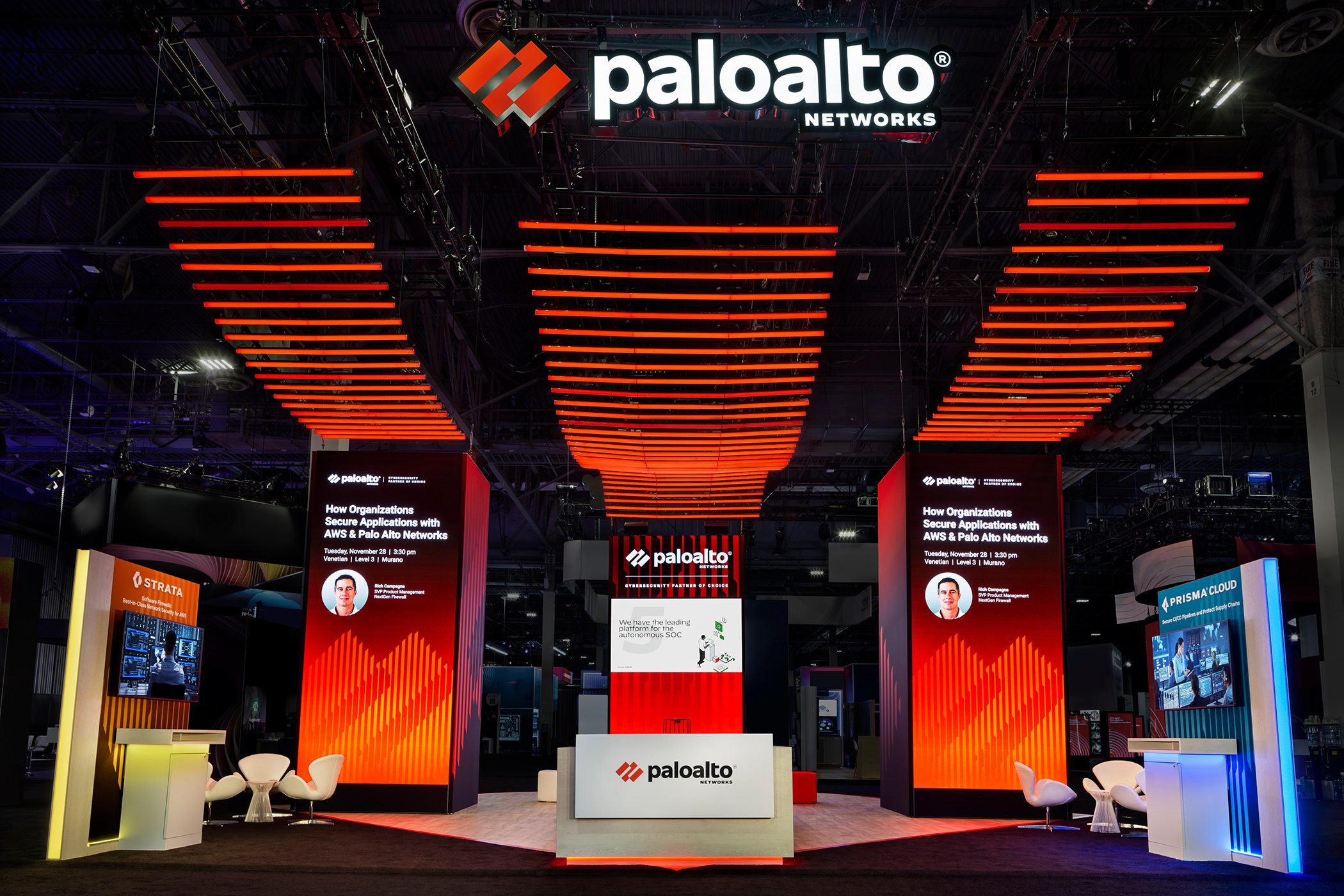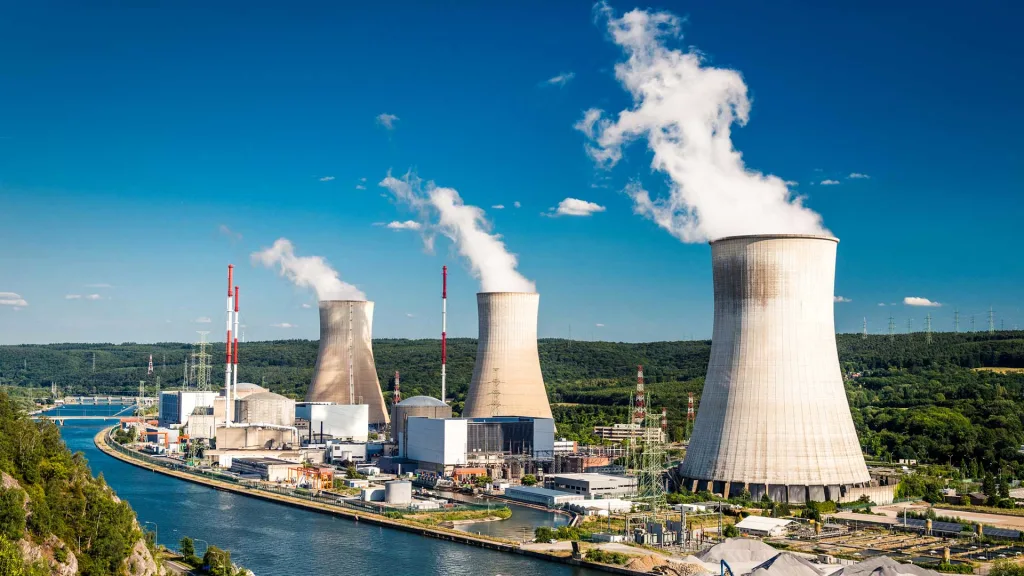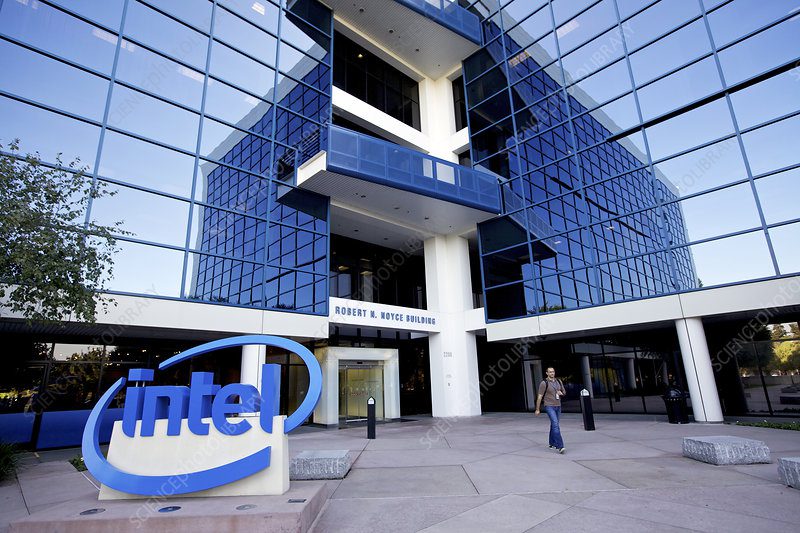Discover how Palo Alto Networks creates lasting value through platform strategy, AI innovation, and competitive moats in cybersecurity.

AI’s surging power consumption raises environmental alarms. Explore its energy demands, carbon footprint, and the critical quest for sustainable AI solutions powering a responsible technological future.

Artificial Intelligence (AI) is no longer a futuristic fantasy; it’s rapidly reshaping industries, revolutionizing scientific research, and embedding itself into our daily lives. From sophisticated chatbots and stunning image generators to complex predictive models, AI’s capabilities are expanding at an unprecedented rate. However, beneath this veneer of digital brilliance lies a growing concern: AI’s voracious appetite for energy. The AI power consumption challenge is emerging as one of the most significant, yet often overlooked, consequences of this technological revolution, carrying substantial implications for global energy grids and the environmental impact of AI.
This article delves into the escalating AI energy consumption, explores the factors driving this surge, examines its AI carbon footprint, and discusses the innovative strategies being developed to foster a more sustainable AI future. Understanding the scale of this issue is the first step towards balancing groundbreaking innovation with environmental responsibility.
The numbers surrounding AI energy consumption are staggering and paint a clear picture of a rapidly accelerating demand. Data centers, the backbone of the digital world and the powerhouses for AI, are at the epicenter of this energy surge. According to recent analyses by the International Energy Agency (IEA), global electricity consumption from data centers, which stood around 415 terawatt-hours (TWh) in 2024 (approximately 1.5% of global electricity use), is projected to more than double, potentially reaching around 945 TWh by 2030. Some projections are even more dramatic, suggesting figures could exceed 1,000 TWh or even approach 1,300-1,700 TWh by 2035 under high-growth scenarios. To put this into perspective, 1,000 TWh is roughly equivalent to the current annual electricity consumption of entire countries like Japan or Germany.
AI is identified as the most significant driver of this increase. The IEA projects that electricity demand specifically from AI-optimized data centers could more than quadruple by 2030. In the United States, a leader in AI development and data center infrastructure, the growth is particularly acute. Projections indicate that data centers could account for almost half of the growth in US electricity demand by 2030. By that year, the US economy might consume more electricity for processing data than for manufacturing all energy-intensive goods (like aluminum, steel, cement, and chemicals) combined. Some estimates suggest that global AI data centers could require 68 gigawatts (GW) of power by 2027, a figure comparable to California’s total power capacity in 2022.
This rapid increase in electricity demand AI is placing considerable strain on existing power grids, necessitating substantial investments in grid upgrades – potentially hundreds of billions of dollars globally by 2030. The future of AI energy is undeniably one of significant growth, posing challenges for energy providers and policymakers alike.

Several factors contribute to AI’s immense energy requirements, primarily stemming from the computational intensity of its core processes: model training and inference, and the specialized hardware required.
1. AI Model Training Energy: Training large-scale AI models, especially deep learning models and Large Language Models (LLMs) like OpenAI’s GPT series, is an extraordinarily energy-intensive process. This phase involves feeding massive datasets into complex neural networks, which then iteratively adjust billions, or even trillions, of parameters to “learn” patterns and relationships. For instance, training a model like GPT-3 was estimated to consume over 1,287 megawatt-hours (MWh) of electricity – enough to power roughly 120 average U.S. homes for a year. More advanced models like GPT-4, with their vastly increased parameter counts (rumored to be in the trillions), demand even more computational power and, consequently, more energy. The sheer volume of calculations (measured in FLOPs – floating-point operations per second) required during training translates directly into high machine learning energy and deep learning power consumption.
2. AI Inference Energy: Once an AI model is trained, its operational use – known as inference – also contributes significantly to ongoing energy draw. Every time an AI system performs a task, whether it’s generating text, translating a language, or identifying an object in an image, it consumes energy. While a single inference query uses less energy than the entire training process, the sheer volume of queries in widely adopted AI applications quickly adds up. Studies have suggested that a single query to an advanced AI chatbot like ChatGPT can consume significantly more electricity – perhaps around 0.3 watt-hours for newer models, but potentially much more for complex queries or older estimates, and notably more (e.g., 5 to 10 times) than a simple Google search. As AI becomes more integrated into everyday applications, the cumulative AI inference energy will become an increasingly dominant factor in overall AI power consumption.
3. Specialized AI Hardware: The computational demands of AI have spurred the development of specialized hardware, primarily Graphics Processing Units (GPUs) and Tensor Processing Units (TPUs). GPUs, originally designed for rendering graphics in video games, proved to be highly effective at the parallel processing tasks inherent in deep learning. TPUs are custom-designed by Google specifically for AI workloads. While these chips are becoming more efficient with each generation, their individual power draw is substantial, often hundreds of watts per chip. A data center packed with thousands of these high-performance chips generates immense heat, necessitating powerful and energy-intensive cooling systems, further adding to the overall AI hardware energy efficiency challenge.
4. Data Movement and Storage: While often overshadowed by computation, the energy required for moving vast datasets between storage and processing units, and for maintaining that storage, also contributes to the overall energy footprint of AI systems.

The immense AI power consumption directly translates into a significant AI carbon footprint, especially when the electricity powering data centers is generated from fossil fuels. While many large tech companies are investing in renewable energy, the global energy mix still heavily relies on carbon-intensive sources in many regions.
Research has attempted to quantify these emissions. A widely cited 2019 study from the University of Massachusetts Amherst estimated that training a single large AI model could emit as much carbon dioxide as five cars over their lifetimes, including their manufacturing. More recent estimates for models like GPT-3 suggest training emissions in the hundreds of metric tons of CO2. The training of Hugging Face’s BLOOM model, which was conducted on a supercomputer in France largely powered by nuclear energy, reportedly produced around 25 metric tons of CO2, highlighting how the energy source dramatically impacts the carbon footprint. If AI model training continues its current trajectory of scaling, a single training run for a future massive model could have an astronomical carbon cost.
Beyond carbon emissions, the environmental impact of AI extends to other critical areas:
Addressing the challenge of AI energy consumption requires a multi-faceted approach, focusing on technological advancements, operational efficiencies, and responsible development practices. The goal is to foster Sustainable AI and Green AI – AI that is not only powerful but also environmentally conscious.
1. Hardware Efficiency: Chip manufacturers are in a constant race to improve the performance-per-watt of their AI accelerators. Newer generations of GPUs (like Nvidia’s H100 and its successors) and TPUs (like Google’s Ironwood) are designed for greater AI hardware energy efficiency. Innovations include: * Architectural improvements for better parallel processing. * Use of lower-precision arithmetic where feasible. * Advanced cooling solutions, such as liquid cooling, which can be more efficient than traditional air cooling. * Development of custom ASICs (Application-Specific Integrated Circuits) tailored for specific AI tasks, potentially offering better power efficiency than general-purpose GPUs.
2. Algorithmic and Model Optimization (Software): Making AI models themselves more efficient is crucial. This involves: * Efficient Model Architectures: Designing smaller, yet still powerful, models. Techniques like developing “sparse” models (which have fewer active parameters) can reduce computational load. * Pruning: Removing less important connections or neurons within a neural network to reduce its size and computational requirements without significantly impacting performance. * Quantization: Reducing the precision of the numbers used in calculations (e.g., from 32-bit floating point to 8-bit integers), which can significantly cut down on energy use and memory. * Knowledge Distillation: Training a smaller “student” model to mimic the performance of a larger, more complex “teacher” model. * Efficient Training Techniques: Optimizing training processes to require fewer iterations or less data.
3. Data Center Design and Operations: Significant energy savings can be achieved at the data center level: * Renewable Energy Sourcing: Locating data centers in regions with abundant renewable energy (solar, wind, hydro) or investing in power purchase agreements for clean energy. * Improving Power Usage Effectiveness (PUE): PUE is a metric for data center energy efficiency (total facility energy / IT equipment energy). Lower PUE values indicate greater efficiency. This can be achieved through optimized cooling, efficient power distribution, and reducing energy losses. * AI for Data Center Optimization: Ironically, AI itself can be used to optimize energy consumption within data centers, for example, by dynamically adjusting cooling systems based on real-time load and environmental conditions (as Google has demonstrated). * Modular Data Centers: Building data centers in a modular way allows for better scalability and energy management.
4. Green AI Initiatives and Responsible Development: There’s a growing movement towards Green AI, which encompasses two main ideas: * Reducing the environmental footprint of AI itself through the methods mentioned above. * Leveraging AI as a tool to solve environmental challenges, such as optimizing energy grids, monitoring deforestation, improving agricultural efficiency, and accelerating the discovery of new materials for batteries or carbon capture. * Promoting transparency in reporting the energy consumption and carbon footprint of AI models and services. Tools like CodeCarbon aim to help developers track and reduce the carbon footprint of their AI systems.

The trajectory of AI power consumption presents a formidable challenge. As AI continues its exponential growth, its energy demands and environmental impact cannot be ignored. The future of AI energy hinges on our collective ability to innovate responsibly. This means a concerted effort from researchers, developers, hardware manufacturers, policymakers, and energy providers.
By prioritizing AI hardware energy efficiency, developing more frugal algorithms, designing smarter and greener data centers, and embracing the principles of Sustainable AI, we can strive to mitigate the environmental costs of this transformative technology. The goal is not to stifle innovation but to guide it towards a path where the immense benefits of AI can be realized without an unsustainable burden on our planet. The journey towards a truly intelligent future must also be an environmentally responsible one.

Discover how Palo Alto Networks creates lasting value through platform strategy, AI innovation, and competitive moats in cybersecurity.

Trump administration takes historic $8.9 billion stake in Intel, acquiring 10% ownership amid bipartisan criticism and concerns over government intervention in private enterprise.

AppLovin posted record Q2 2025 results, with 77% revenue growth, higher margins, and a strategic shift toward core adtech platforms.
AI’s surging power consumption raises environmental alarms. Explore its energy demands, carbon footprint, and the critical quest for sustainable AI solutions powering a responsible technological future.

Artificial Intelligence (AI) is no longer a futuristic fantasy; it’s rapidly reshaping industries, revolutionizing scientific research, and embedding itself into our daily lives. From sophisticated chatbots and stunning image generators to complex predictive models, AI’s capabilities are expanding at an unprecedented rate. However, beneath this veneer of digital brilliance lies a growing concern: AI’s voracious appetite for energy. The AI power consumption challenge is emerging as one of the most significant, yet often overlooked, consequences of this technological revolution, carrying substantial implications for global energy grids and the environmental impact of AI.
This article delves into the escalating AI energy consumption, explores the factors driving this surge, examines its AI carbon footprint, and discusses the innovative strategies being developed to foster a more sustainable AI future. Understanding the scale of this issue is the first step towards balancing groundbreaking innovation with environmental responsibility.
The numbers surrounding AI energy consumption are staggering and paint a clear picture of a rapidly accelerating demand. Data centers, the backbone of the digital world and the powerhouses for AI, are at the epicenter of this energy surge. According to recent analyses by the International Energy Agency (IEA), global electricity consumption from data centers, which stood around 415 terawatt-hours (TWh) in 2024 (approximately 1.5% of global electricity use), is projected to more than double, potentially reaching around 945 TWh by 2030. Some projections are even more dramatic, suggesting figures could exceed 1,000 TWh or even approach 1,300-1,700 TWh by 2035 under high-growth scenarios. To put this into perspective, 1,000 TWh is roughly equivalent to the current annual electricity consumption of entire countries like Japan or Germany.
AI is identified as the most significant driver of this increase. The IEA projects that electricity demand specifically from AI-optimized data centers could more than quadruple by 2030. In the United States, a leader in AI development and data center infrastructure, the growth is particularly acute. Projections indicate that data centers could account for almost half of the growth in US electricity demand by 2030. By that year, the US economy might consume more electricity for processing data than for manufacturing all energy-intensive goods (like aluminum, steel, cement, and chemicals) combined. Some estimates suggest that global AI data centers could require 68 gigawatts (GW) of power by 2027, a figure comparable to California’s total power capacity in 2022.
This rapid increase in electricity demand AI is placing considerable strain on existing power grids, necessitating substantial investments in grid upgrades – potentially hundreds of billions of dollars globally by 2030. The future of AI energy is undeniably one of significant growth, posing challenges for energy providers and policymakers alike.

Several factors contribute to AI’s immense energy requirements, primarily stemming from the computational intensity of its core processes: model training and inference, and the specialized hardware required.
1. AI Model Training Energy: Training large-scale AI models, especially deep learning models and Large Language Models (LLMs) like OpenAI’s GPT series, is an extraordinarily energy-intensive process. This phase involves feeding massive datasets into complex neural networks, which then iteratively adjust billions, or even trillions, of parameters to “learn” patterns and relationships. For instance, training a model like GPT-3 was estimated to consume over 1,287 megawatt-hours (MWh) of electricity – enough to power roughly 120 average U.S. homes for a year. More advanced models like GPT-4, with their vastly increased parameter counts (rumored to be in the trillions), demand even more computational power and, consequently, more energy. The sheer volume of calculations (measured in FLOPs – floating-point operations per second) required during training translates directly into high machine learning energy and deep learning power consumption.
2. AI Inference Energy: Once an AI model is trained, its operational use – known as inference – also contributes significantly to ongoing energy draw. Every time an AI system performs a task, whether it’s generating text, translating a language, or identifying an object in an image, it consumes energy. While a single inference query uses less energy than the entire training process, the sheer volume of queries in widely adopted AI applications quickly adds up. Studies have suggested that a single query to an advanced AI chatbot like ChatGPT can consume significantly more electricity – perhaps around 0.3 watt-hours for newer models, but potentially much more for complex queries or older estimates, and notably more (e.g., 5 to 10 times) than a simple Google search. As AI becomes more integrated into everyday applications, the cumulative AI inference energy will become an increasingly dominant factor in overall AI power consumption.
3. Specialized AI Hardware: The computational demands of AI have spurred the development of specialized hardware, primarily Graphics Processing Units (GPUs) and Tensor Processing Units (TPUs). GPUs, originally designed for rendering graphics in video games, proved to be highly effective at the parallel processing tasks inherent in deep learning. TPUs are custom-designed by Google specifically for AI workloads. While these chips are becoming more efficient with each generation, their individual power draw is substantial, often hundreds of watts per chip. A data center packed with thousands of these high-performance chips generates immense heat, necessitating powerful and energy-intensive cooling systems, further adding to the overall AI hardware energy efficiency challenge.
4. Data Movement and Storage: While often overshadowed by computation, the energy required for moving vast datasets between storage and processing units, and for maintaining that storage, also contributes to the overall energy footprint of AI systems.

The immense AI power consumption directly translates into a significant AI carbon footprint, especially when the electricity powering data centers is generated from fossil fuels. While many large tech companies are investing in renewable energy, the global energy mix still heavily relies on carbon-intensive sources in many regions.
Research has attempted to quantify these emissions. A widely cited 2019 study from the University of Massachusetts Amherst estimated that training a single large AI model could emit as much carbon dioxide as five cars over their lifetimes, including their manufacturing. More recent estimates for models like GPT-3 suggest training emissions in the hundreds of metric tons of CO2. The training of Hugging Face’s BLOOM model, which was conducted on a supercomputer in France largely powered by nuclear energy, reportedly produced around 25 metric tons of CO2, highlighting how the energy source dramatically impacts the carbon footprint. If AI model training continues its current trajectory of scaling, a single training run for a future massive model could have an astronomical carbon cost.
Beyond carbon emissions, the environmental impact of AI extends to other critical areas:
Addressing the challenge of AI energy consumption requires a multi-faceted approach, focusing on technological advancements, operational efficiencies, and responsible development practices. The goal is to foster Sustainable AI and Green AI – AI that is not only powerful but also environmentally conscious.
1. Hardware Efficiency: Chip manufacturers are in a constant race to improve the performance-per-watt of their AI accelerators. Newer generations of GPUs (like Nvidia’s H100 and its successors) and TPUs (like Google’s Ironwood) are designed for greater AI hardware energy efficiency. Innovations include: * Architectural improvements for better parallel processing. * Use of lower-precision arithmetic where feasible. * Advanced cooling solutions, such as liquid cooling, which can be more efficient than traditional air cooling. * Development of custom ASICs (Application-Specific Integrated Circuits) tailored for specific AI tasks, potentially offering better power efficiency than general-purpose GPUs.
2. Algorithmic and Model Optimization (Software): Making AI models themselves more efficient is crucial. This involves: * Efficient Model Architectures: Designing smaller, yet still powerful, models. Techniques like developing “sparse” models (which have fewer active parameters) can reduce computational load. * Pruning: Removing less important connections or neurons within a neural network to reduce its size and computational requirements without significantly impacting performance. * Quantization: Reducing the precision of the numbers used in calculations (e.g., from 32-bit floating point to 8-bit integers), which can significantly cut down on energy use and memory. * Knowledge Distillation: Training a smaller “student” model to mimic the performance of a larger, more complex “teacher” model. * Efficient Training Techniques: Optimizing training processes to require fewer iterations or less data.
3. Data Center Design and Operations: Significant energy savings can be achieved at the data center level: * Renewable Energy Sourcing: Locating data centers in regions with abundant renewable energy (solar, wind, hydro) or investing in power purchase agreements for clean energy. * Improving Power Usage Effectiveness (PUE): PUE is a metric for data center energy efficiency (total facility energy / IT equipment energy). Lower PUE values indicate greater efficiency. This can be achieved through optimized cooling, efficient power distribution, and reducing energy losses. * AI for Data Center Optimization: Ironically, AI itself can be used to optimize energy consumption within data centers, for example, by dynamically adjusting cooling systems based on real-time load and environmental conditions (as Google has demonstrated). * Modular Data Centers: Building data centers in a modular way allows for better scalability and energy management.
4. Green AI Initiatives and Responsible Development: There’s a growing movement towards Green AI, which encompasses two main ideas: * Reducing the environmental footprint of AI itself through the methods mentioned above. * Leveraging AI as a tool to solve environmental challenges, such as optimizing energy grids, monitoring deforestation, improving agricultural efficiency, and accelerating the discovery of new materials for batteries or carbon capture. * Promoting transparency in reporting the energy consumption and carbon footprint of AI models and services. Tools like CodeCarbon aim to help developers track and reduce the carbon footprint of their AI systems.

The trajectory of AI power consumption presents a formidable challenge. As AI continues its exponential growth, its energy demands and environmental impact cannot be ignored. The future of AI energy hinges on our collective ability to innovate responsibly. This means a concerted effort from researchers, developers, hardware manufacturers, policymakers, and energy providers.
By prioritizing AI hardware energy efficiency, developing more frugal algorithms, designing smarter and greener data centers, and embracing the principles of Sustainable AI, we can strive to mitigate the environmental costs of this transformative technology. The goal is not to stifle innovation but to guide it towards a path where the immense benefits of AI can be realized without an unsustainable burden on our planet. The journey towards a truly intelligent future must also be an environmentally responsible one.

Discover how Palo Alto Networks creates lasting value through platform strategy, AI innovation, and competitive moats in cybersecurity.

Trump administration takes historic $8.9 billion stake in Intel, acquiring 10% ownership amid bipartisan criticism and concerns over government intervention in private enterprise.

AppLovin posted record Q2 2025 results, with 77% revenue growth, higher margins, and a strategic shift toward core adtech platforms.

Discover how the Big Beautiful Bill reshapes taxes, healthcare, and national spending in 2025. Explore its impacts on personal finances, federal debt, and everyday life in this comprehensive analysis.
